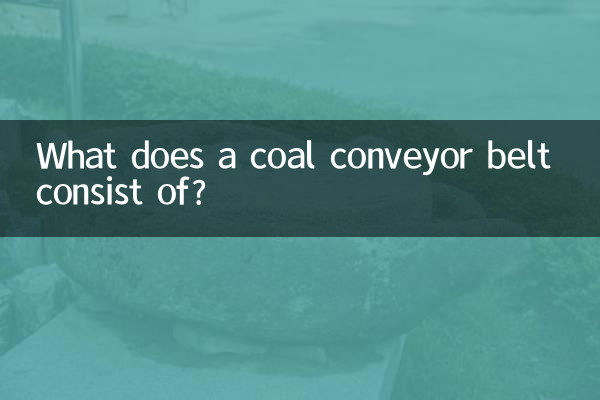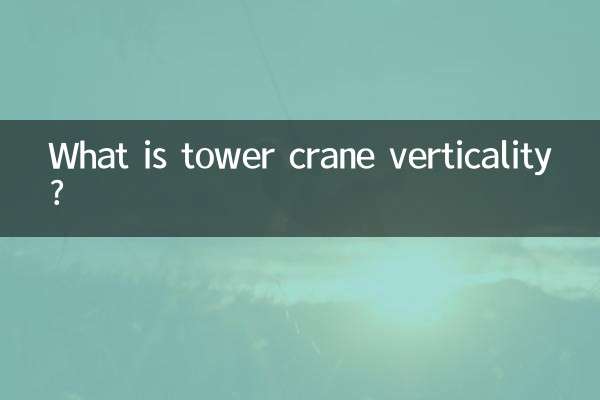What does a coal conveyor belt consist of?
Coal conveying belt is an indispensable key equipment in the coal transportation system and is widely used in coal mines, power plants, ports and other places. Its efficient and continuous transportation capacity greatly improves the efficiency of coal processing. So, what exactly does the coal conveyor belt consist of? This article will analyze the structure of the coal conveyor belt in detail and demonstrate its core components through structured data.
1. Main components of coal conveyor belt

The coal conveying belt mainly consists of the following parts: belt, driving device, supporting roller, tensioning device, cleaner, bracket and auxiliary equipment. Each part plays an irreplaceable role and together ensures the stable operation of the belt conveyor system.
| components | Function description | Material/Type |
|---|---|---|
| belt | Core components for carrying and transporting coal | Rubber, PVC, wire rope core, etc. |
| Drive unit | Provides power to drive the belt to run | Motor, reducer, coupling, etc. |
| roller | Support the belt to reduce frictional resistance | Steel, plastic, ceramic, etc. |
| tensioning device | Maintain belt tension to prevent slipping | Screw type, hammer type, hydraulic type, etc. |
| cleaner | Remove coal residue from belt surface | Scraper type, rotary type, etc. |
| Bracket | Supports the entire belt system | Steel structure, concrete foundation, etc. |
2. Detailed explanation of the core components of the coal conveyor belt
1. Belt
The belt is the most important part of the coal conveying belt system. Its material and structure directly affect the transportation efficiency and life. Common belt types include ordinary rubber belts, heat-resistant rubber belts, steel wire core belts, etc. Belts made of different materials are suitable for different working environments. For example, steel rope core belts are suitable for long-distance, high-load transportation scenarios.
2. Drive device
The driving device is the power source of the coal conveyor belt and usually consists of a motor, a reducer and a coupling. The motor converts electrical energy into mechanical energy, the reducer reduces the speed and increases torque, and the coupling connects the motor and the reducer to ensure smooth power transmission.
3. Roller
The idler roller is a key component that supports the belt. Its function is to reduce the friction resistance of the belt during operation and prevent the belt from sagging. The rollers can be divided into upper rollers, lower rollers and buffer rollers according to their installation positions. In terms of material, steel rollers have strong wear resistance, while plastic rollers are suitable for humid environments.
4. Tensioning device
The tensioning device is used to maintain the proper tension of the belt and prevent the belt from slipping or running off track. Common tensioning methods include screw, hammer and hydraulic. The weight-type tensioning device automatically adjusts the tension through gravity and is suitable for long-distance belt transportation systems.
5. Cleaner
The function of the cleaner is to remove residual coal on the surface of the belt to prevent material accumulation and belt wear. Scraper cleaners remove material with a rigid scraper, while rotary cleaners clean the belt surface with rotating brushes.
6. Brackets and auxiliary equipment
The bracket is the support structure of the coal conveyor belt system, usually made of steel structure or concrete foundation. Auxiliary equipment includes protective covers, guide troughs, anti-deviation devices, etc. to further ensure the safe operation of the system.
3. Application scenarios of coal conveyor belts
Coal conveying belts are widely used in the following scenarios:
4. Future development trends of coal conveyor belts
With the advancement of technology, coal conveyor belts are developing in the direction of intelligence and efficiency. For example, by installing sensors and monitoring systems, real-time status monitoring and fault warning of belts can be achieved. In addition, the application of new materials (such as high-strength composite materials) will further improve the service life and transportation efficiency of the belt.
To sum up, the coal conveyor belt is a complex system, and its efficient operation cannot be separated from the coordinated work of each component. Understanding its component structure can help to better maintain and optimize the belt transportation system, thereby improving the overall efficiency of coal transportation.

check the details

check the details